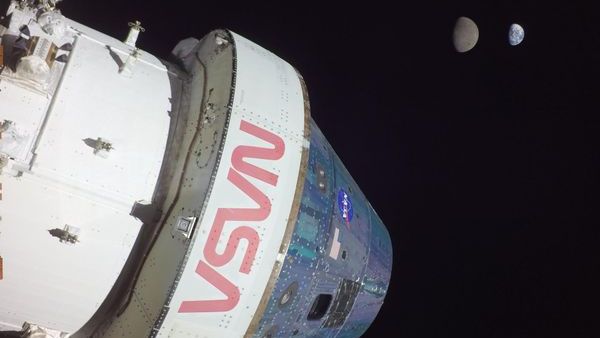Data from NASA’s Artemis 1 moon mission has provided valuable space radiation measurements, which validate spacecraft performance and will help guide deep-space human spaceflight.
The uncrewed Artemis 1 mission launched in November 2022, using the gigantic Space Launch System (SLS) rocket to send an Orion spacecraft around the moon and back, serving as a crucial test for upcoming Artemis astronaut missions.
A recent paper published by an international team, including researchers from the European Space Agency (ESA), the German Aerospace Center (DLR) and NASA, reveals that Orion‘s shielding is effective in protecting astronauts in deep space. The study analyzed radiation data collected over the 25-day Artemis 1 mission from sensors placed throughout the spacecraft and inside two life-size mannequin torsos, named Helga and Zohar.
The researchers found that Orion’s most-shielded areas provided four times more protection than the least-shielded areas. They also determined that a 90-degree change in orientation of the spacecraft during transit through the Van Allen radiation belts resulted in a roughly 50% reduction in radiation dose rates, demonstrating the importance of shielding and spacecraft positioning.
Related: NASA’s Artemis program: Everything you need to know
Published in the journal Nature on Sept. 18, these findings are promising for the safety of future crewed missions, the researchers said.
“The Artemis 1 mission marks a crucial step in advancing our understanding of how space radiation impacts the safety of future crewed missions to the moon. With radiation monitors placed throughout the Orion capsule, we are gaining valuable insights into how space radiation interacts with the spacecraft’s shielding, the types of radiation that penetrate to reach the human body, and which areas inside Orion offer the most protection,” Sergi Vaquer Araujo, lead for the space medicine team, said in an ESA statement.
The data collected builds on previous radiation measurements from the International Space Station, space shuttle missions and interplanetary probes, while adding to the limited data from the Apollo missions. This research validates Orion’s design for future human exploration and provides critical information for mission planning and astronaut safety.
The next mission in the program, Artemis 2, is currently scheduled to launch in September 2025. It will send four astronauts on a mission around the moon.

